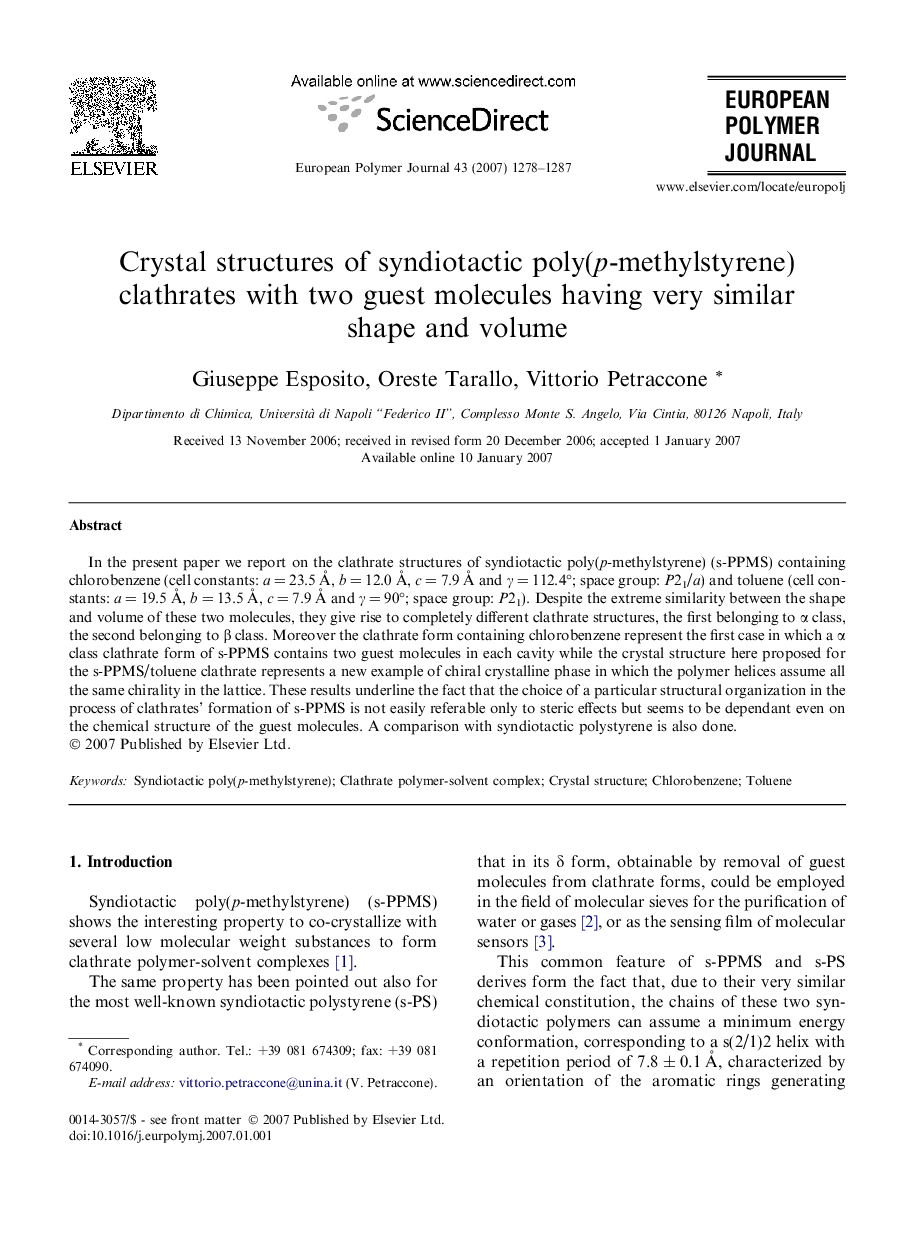| Article ID | Journal | Published Year | Pages | File Type |
|---|---|---|---|---|
| 1398554 | European Polymer Journal | 2007 | 10 Pages |
Abstract
In the present paper we report on the clathrate structures of syndiotactic poly(p-methylstyrene) (s-PPMS) containing chlorobenzene (cell constants: a = 23.5 Ã
, b = 12.0 Ã
, c = 7.9 Ã
and γ = 112.4°; space group: P21/a) and toluene (cell constants: a = 19.5 Ã
, b = 13.5 Ã
, c = 7.9 Ã
and γ = 90°; space group: P21). Despite the extreme similarity between the shape and volume of these two molecules, they give rise to completely different clathrate structures, the first belonging to α class, the second belonging to β class. Moreover the clathrate form containing chlorobenzene represent the first case in which a α class clathrate form of s-PPMS contains two guest molecules in each cavity while the crystal structure here proposed for the s-PPMS/toluene clathrate represents a new example of chiral crystalline phase in which the polymer helices assume all the same chirality in the lattice. These results underline the fact that the choice of a particular structural organization in the process of clathrates' formation of s-PPMS is not easily referable only to steric effects but seems to be dependant even on the chemical structure of the guest molecules. A comparison with syndiotactic polystyrene is also done.
Related Topics
Physical Sciences and Engineering
Chemistry
Organic Chemistry
Authors
Giuseppe Esposito, Oreste Tarallo, Vittorio Petraccone,
